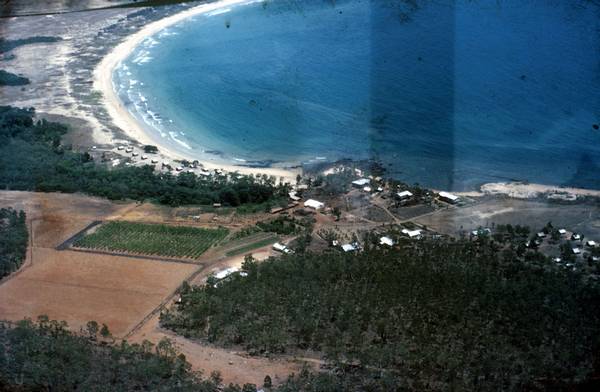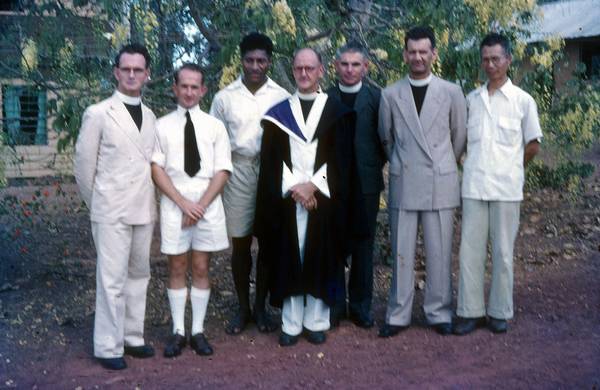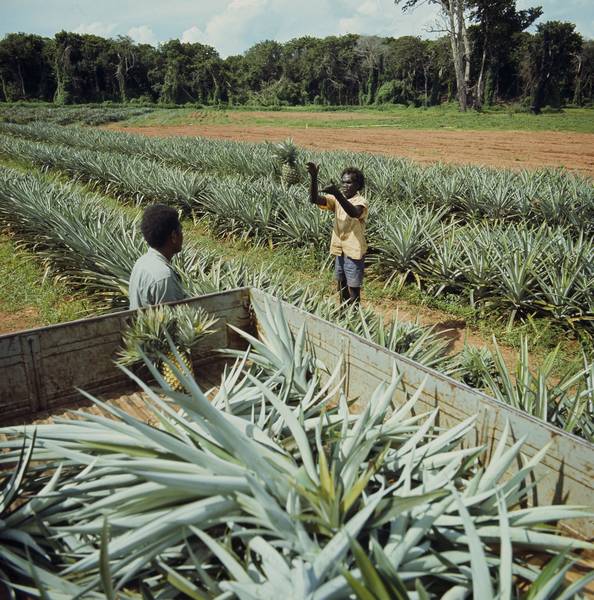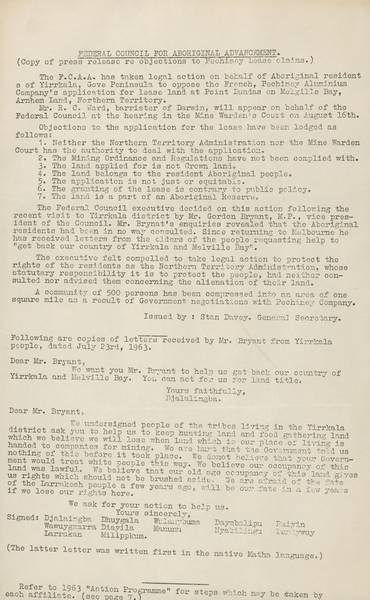Mining development proposed for Arnhem Land
The Aborigines belong to the land, but the land does not belong to the Aborigines. (from Blackburn judgement, 1971)
Throughout the 1950s the eyes of pastoral and mining developers were trained on Arnhem Land in the Northern Territory. It was a place that was seen as likely to offer lucrative rewards to the developer.
The Arnhem Land Aboriginal Reserve occupied much of this area, providing an impediment, but not an insurmountable one, to development. In 1952 Cabinet authorised the Northern Territory Legislative Council to amend the Mining Ordinance to permit the Administrator of the Northern Territory, through the Native Affairs Branch, to grant mining rights on Aboriginal reserves.
In February 1963, Prime Minister Robert Menzies announced a further change to the Arnhem Land Reserve. The federal government approved Gove Bauxite Corporation's plans to mine in the vicinity of the Yirrkala Methodist Mission.

Source: PH0049/0758, Cheater Collection, Northern Territory Library and Information Service, Darwin
The Methodist mission
Discussions had been taking place between the General Secretary of the Methodist Overseas Mission, Cecil Gribble, and the government. The Commonwealth government signed a lease with Gove Bauxite Corporation, a subsidiary of Pechiney Aluminium, a French company. One hundred and forty square miles were to be excised from the Arnhem Land reserve.

This photograph of a group of missionaries, including Arthur Ellemor, Harold Shepherdson and Edgar Wells, was taken at Galiwin'ku, Elcho Island, Arnhem Land.
Source: PH0049/0123, Cheater collection, Northern Territory Library and Information Service, Darwin
Reverend Edgar Wells, the superintendent at Yirrkala since 1962, had come from the Wessel Islands where he had witnessed the effects of mining on the community. He was not party to the discussions leading up to the signing of the lease. The residents had seen prospectors in the vicinity of the mission but were not told that a mining company was being given permission to mine in Arnhem Land. Wells broke with protocol and sent telegrams to newspaper editors and activists telling them what had happened:
583 semi-nomads now squeezed by the bauxite land grab into half a square mile. Original holding 200 square miles. Impossible to house population in approved homes within area. Loss of cultivated and grazing lands means we must eat the cattle before miners arrive and import basic food crops afterwards. [1]

Source: National Archives of Australia, A6135, K18/5/72/64
At the 1963 Federal Council for Aboriginal Advancement (FCAA) annual conference, General Secretary Stan Davey read Edgar Wells' telegram to the 120 people gathered in Canberra.

The Federal Council for Aboriginal Advancement (FCAA) took legal action against the Pechiney Aluminum company's application to lease Yirrkala land at Melville Bay.
Source: 'Yirrkala', Barry Christophers Papers, 1951-1981, MS 7992/8, box 16, National Library of Australia
Intense discussions and expressions of outrage resulted in a course of action. Delegates asked the vice-president, Labor Member for Wills, Gordon Bryant, to go to Yirrkala to find out the residents' views concerning the proposed mining.
Related resources
People
Organisation
Federal Council for Aboriginal Advancement
Footnotes
1 Edgar Wells, Reward and Punishment in Arnhem Land, Australian Institute of Aboriginal and Torres Strait Islander Studies, Canberra, 1982, p. 42.
Cecil Holmes, editor of The Territorian, also wrote to Barry Christophers with information about what was happening at Yirrkala, 27 February 1963, Barry Christophers Papers MS 7992/16, National Library of Australia
383799
- 383799
- 383814
- 383828
- 383845
- 383878